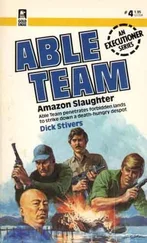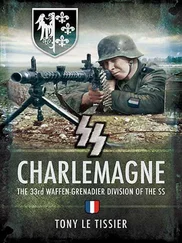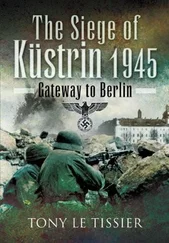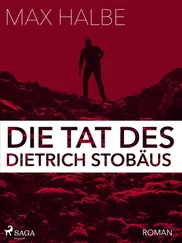We approached Schönefeld. The engine of our Tiger started spluttering, being about to run out of fuel. There was none to be had anywhere. Then we learned from local civilians that there should be some stored at the transmitter south of Schönefeld, so we struggled on there on the last drops in our fuel tank.
We found, as described, a 200-litre barrel and put the contents into our fuel tank, but when the engine started up, Bert Fink, my driver, expressed doubts about the fuel. The engine was running unevenly and kept stopping. Only through my driver’s technical skill could our Tiger be got moving. We had to keep the engine hatch open with a man pulling on a lever.
The 12th Army’s reception point could not be far off. Thousands of soldiers and civilians were streaming across the open ground to the west. But our tank could not go much further either.
We received orders again, but orders had little effect anymore. Our Tiger engine gave up, making bubbling noises. We were then told to dig the Tiger in and to use the gun as artillery to cover the remains of 9th Army but, in view of the situation, I decided otherwise. We made our Königstiger unserviceable and made off to the west with the others. We left our our old wreck behind with pangs of regret, for we had fought so many fights together.
My radio-operator, Heimlich, was killed in a bombing attack on the autobahn south of Beelitz. [9] Tieke, Das Ende zwischen Oder und Elbe , p. 342.
Ernst-Christian Gädtke also battled through successfully:
The morning of 1 May was as cold as the night. We prepared ourselves for the attack with some more ersatz coffee and a few cigarettes.
We rolled on towards Beelitz via Ahrensdorf, Stangenhagen and Zauchwitz. [10] From Stanganhagen onwards the road was Route 246, the main road from Trebbin to Beelitz, so Gädtke’s subsequent moves took him north of the latter town.
Shortly after Zauchwitz the road emerged from a wood on to open fields, and round a bend to the left we could see Beelitz ahead of us and hear artillery and infantry fire coming from there. On either side of the road stragglers were waiting in the ditches for a breach to be forced up ahead. We could see flashes of gunfire coming from Beelitz and then fountains of earth sprang up around us as the shells exploded, splinters whistling through the air.
Our guns received the order to open fire, so we had to get off as the hatches were closed down. I jumped off to the right and tried to keep up with the moving gun at some distance to the side, but the guns speeded up towards Beelitz and I was soon left behind. Russian artillery fire was still falling on the road, so I moved away northwards from the road without noticing I was doing so. The meadows were strewn with clumps of bushes and trees, and here we found cover. There were small groups of soldiers from various units advancing here, but no properly led attack, more of a loose and accidental movement. No one was in command, and no one really knew what was happening. After a few minutes I found myself separated from my group, having got lost somehow. The assault gun had vanished up the road, and with it went my last worldly goods including my carefully packed haversack.
Unwillingly, I let myself be drawn away from the road and the artillery fire. Someone shouted: ‘Get round the place to the north’, and ‘Keep right.’ Then we came to a drain that cut right across the land. A wounded man was lying on the bank with his thigh ripped open by shell splinters. ‘Take me with you!’ he cried. We called for medical orderlies, but there were none around. Finally four of us placed him on a tent-half and carried him through the knee-deep water. We laid him down again at the edge of the woods, by which time he had lost consciousness, and left him there.
The woods were swarming with stragglers, most of them unarmed. They were lying down in groups, apparently having decided not to do anything, just wait for it to be all over.
I joined on to a section of infantry under a lieutenant who were moving purposefully through the wood. ‘Come with us, comrade’, one of them called out to me, ‘You don’t look as if you just want to be taken prisoner.’
We went a short distance through the woods to the north-west and then concealed ourselves in a thick pine plantation. The lieutenant called us together and explained what he proposed doing. According to him the Russians were only holding a thin line here, concentrating on places like Beelitz. An attack on Beelitz was just stupid. North and south of there one had a far better chance of getting past the Russians. We would wait hidden in this plantation until dusk and then make our way through the Russian lines in the dark. Everything depended on sticking together, moving dead quietly, maintaining discipline and, should something happen, acting decisively. This made sense. We set sentries on the edge of the plantation, stretched ourselves out on the ground and got a little sleep.
Once it was dark, we shared out all that we had left to eat, crispbread and tinned cheese. We left the plantation in single file moving silently towards the west. We reached the autobahn without stopping and observed the wide gap from the edge of the woods for a few minutes. Nothing moved. Then we raced across, ducked down, in a body. Not a shot was fired as we disappeared into the woods on the far side.
We reached the Borkwalde settlement unscathed. Light was coming from a cellar window. We went down to the cellar, where a few men and women were sitting. The Russians had passed through here a few days before heading north for Potsdam, but there had been German troops in the area for several days. They had evacuated several hundred wounded and nurses from the Beelitz sanatorium, but had gone again. No Russians had been seen west of the autobahn in the last few days.
Now we were sure – we had got through. [11] Gädtke, Von der Oder zur Elbe , pp. 36–7.
The last of the armoured vehicles kept to the Rieben–Schönefeld road, where several Soviet anti-tank barriers were overcome. But then the leading armour was struck again, as SS-Lieutenant Bärmann remembered:
We saw about ten T-34s near Schönefeld. A Königstiger stood about 400 metres in front of Schönefeld, taking the anti-tank barrier and Russian tanks under fire, and only pulling back when it ran out of ammunition. We couldn’t get through on the Beelitz road, so turned off left on a track and drove across open country. Despite enemy fire, we reached a wooded hill on which there was a radio transmitter mast, about 400 metres south of Schönefeld, where we stopped to reorientate ourselves. [12] Tieke, Das Ende zwischen Oder und Elbe , pp. 339–40.
Helmuth Jurisch, who was also in this area, reported:
From the radio station near Schönefeld a track led through a wood to the village of Elsholz about two kilometres away. Along this track towards Elsholz were moving soldiers like myself who had fought their way from Halbe. Then in the wood in front of Elsholz I was taken aboard another of our tanks as radio-operator. As we came out of the wood the village lay suddenly in front of us, the houses hidden behind trees, the church back a bit on the right, and green fields in front. Everything was quiet at first, but soon an enemy machine gun opened up rather ineffectively from the church tower on the attacking soldiers, who, according to a witness, were able to take the machine gunners in the tower.
Fortunately the Russians had no anti-tank weapons in the village, so our tank was able to reach the village intact. Ivan took to flight and crept away. After a short stop to ensure all was in order, we rolled on into the village. We then came to the Nieplitz swamp, in which our last four Panthers became stuck fast. This swamp lies west of Elsholz behind Route 2. From here a track went past the railway station, through a wood and over fields to cross some meadows short of the Nieplitz stream. There in the meadows right of the track lay the graveyard of the last remains of our tanks, the four Panthers of 1st Battalion, Panzer Regiment Brandenburg , which had fought since 4 February 1945 with Panzergrenadier Division Kurmark . We bailed out for the last time and had to watch as our four Panthers, virtually out of fuel and ammunition, literally sank into the swamp. We twenty tankmen then marched towards Beelitz, crossed the Nieplitz stream by the nearest bridge, made our way across streams and ditches and finally reached Route 246 south-west of Beelitz, where troops of the Wenck Army were moving towards Brück. After several days we reached Fischbeck on the Elbe and crossed the collapsed Elbe bridge into American captivity near Tangermünde. [13] Jurisch to the author. Although he gives the date of this incident as 30 April, it seems most likely to have occurred on 1 May. In a subsequent discussion with the author, Jurisch stated that the driving of the tanks into a swamp just north of Salzbrunn was deliberate.
Читать дальше












